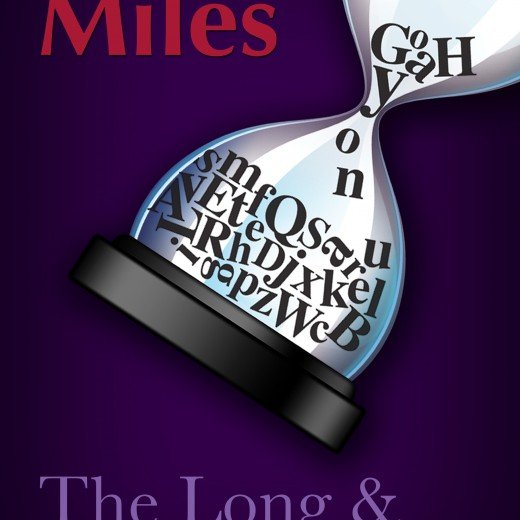Learning from Our Reading by Martin Haworth
 Let’s welcome back monthly columnist Martin Haworth as he shares with us “Learning from Our Reading.” Enjoy!
Let’s welcome back monthly columnist Martin Haworth as he shares with us “Learning from Our Reading.” Enjoy!
***
Over the summer I’ve been reading a lot (haven’t we all?) and I’ve realised that my reading has changed a little as I’ve started to write more and with the hindsight of what I’ve learned along the way.
My reading likes are varied and I’m prepared to take risks (usually from the charity shop!). I love good crime fiction; ‘happy ever after’ romances and (some) Dickens as my favourites, but I’ve also started to read some of the better stuff that receives recommended reading status for writers. This Summer, I read Annie Proulx (‘The Shipping News’) for the first time as well as Sebastian Faulks (‘Where My Heart Used to Beat’), both rather outside my normal bedtime entertainment – and really enjoyed them too.
I also finished two more great books, one by Peter May (‘Freeze Frame’) and one by Clare Mackintosh (‘I See You’), both of which were very compelling in a different way, for they were thrillers where the page-turning came from the compulsion to find out what happens next.
We’re all different and read in varied circumstances. Some people manage to read a lot on their daily commute. My sister used to be able to curl up with a good book and be undeterred by three boisterous brothers playing indoor football around her. I read mainly in bed at night and in the morning (having the luxury of quite a few days in my month where I don’t work). But I’m also able to take a good book down to a lonely dinner when I’m worked away and need to spend nights in hotels too. Indeed a good book is vital for me when I’m away. I left a new Tami Hoag in the seatback on the plane the last time I was away for a week (good job I took a spare!).
For me, a book needs to move along a bit and have pace, intrigue and characters I can empathise with, but it definitely doesn’t want to intimidate me by its size. I’m easily bored, so Pride and Prejudice or War and Peace are earmarked very near to the beginning, never to be opened again unless I find myself bedridden for a lengthy period sometime. In fact I can’t think of any book I’ve read that has exceeded 400 pages.
I know very early on when a read is going to lose my attention and so I’ve started to notice more what it is about a ‘good read’ that keeps me engaged and is a hard-to-prise-me-away-from story.
So what did I learn from these very different books as I lay on my metaphorical beach, with a margarita in hand?
For all of them, except the Proulx, which meanders to an end in a slow, fascinating way (and equally compelling for it), I can see that each of the writers simply must have had an idea of how they were to end before writing commenced. I can’t believe that these books reached the conclusions they did without in some way at least, working backwards.
All of them have varied, yet fascinating characters. From Proulx’s harmless, rather weary Quoyle (who I wanted to give a kick up the backside to several times!), through the mixed Scottish/Italian Enzo with his mixed up relationship problems running alongside his cases. Then there’s Faulks’ Hendricks who you sort of feel sorry for a lost life, yet want to follow through on his quest (why didn’t he… whoops, no spoilers!) and Mackintosh’s ever-busy Zoe Walker, who is always one step away from some scary and lurking stalker/murderer situation that only takes shape towards the end of the book. Two of the books are written in first person and two in third and I know the writers will have made conscious decisions about that.
So, what can we derive from such a range of stories. Good structure. Good pace. Characters all with drive AND challenging backstories (their ‘obstacles’). There’s also such a lot in the stories that takes time to unravel, rather than be clear. To keep us guessing. To have us turning pages till late in the night.
My personal learnings are as follows:
- Have prepared good depth to characters and be as unlikely as you want to be in your creativity. On the page it will be OK!
- Have an appreciation of how the story will end – or be prepared for a lot of re-engineering on rewrites.
- Build in the twists and turns so the reader can say, ’Aha. I thought that might be the case’. I think readers like to read the clues, store them away safely and then find out they were right – maybe. The balance here needs to be really careful, for you don’t want the baddie to be too obvious, do you?
- Enjoy your reading, but DO take note of what you read and how it works, then, as a writer, you will be educating yourself and doubling your value.
Next up for me?
Well, I have a Henning Mankell and Annie Proulx book of short stories (for I think I prefer to write them) ready to go.
Enjoy your reading!
PS – I’ve also dug out my copy of ‘Reading Like a Writer’, by Francine Prose!
***
ABOUT MARTIN HAWORTH
 Martin Haworth is a coach, trainer and would-be fiction author with a manuscript that “needs work.” He lives in Gloucester, England and has two grown-up kids and three grandchildren. He loves walking, travel, and supporting Burnley Football Club. Check out his website at http://martinhaworth.com.
Martin Haworth is a coach, trainer and would-be fiction author with a manuscript that “needs work.” He lives in Gloucester, England and has two grown-up kids and three grandchildren. He loves walking, travel, and supporting Burnley Football Club. Check out his website at http://martinhaworth.com.







Thanks for your list of “Personal Learnings.” As someone in the throes of the second draft of my first novel, I’ve been making numerous changes to my story, thinking often of my favorite authors and what I like about them.
One book I did read over 400 pages (it’s 700+ pages!) was “The Pillars of the Earth” by Ken Follet. That was a page turner for me. I never knew what was coming. There were constant non-obvious twists and political meanderings that kept my head spinning but my interest piqued. I’d love to be able to write like that.
Hi Hugh. You’re right. I DID read that, but it was an easy read. There was pace and simplicity about it. Thanks for adding a comment!
Martin
Thank you Martin for sharing your insight. In the library where I work we’ve started a new bookclub – rather than a single title, we are diving into a single author each month. What an eye opener – our group choices have leant to classics from Steinbeck and Greene; Kingsolver and Garner and we have Proulx coming up. (Did not know she wrote Brokeback!) Point being, after reading from such a pool of talent it transforms my writing. If I feel a little flat, I sit down for a short reading session and it gives me a new way of digging in to my work. My current novel was inspired by a single line from a book I read two years ago by Australian hf author, Thea Astley.
Thanks for taking the time to add to my post Jay. I think reading different books by the same author is a great idea. My favourite book of all time is ‘A Town Like Alice’, by Nevil Shute. Yet I began to read another of his books many years ago and hated it. Then I revisited him and found ‘On the Beach’, which is a 50’s post-nuclear pseudo-dystopian story set in Australia, which really gave me cause for thought almost 70 years later. And helped my writing style too, as it’s so simply written, yet grips. BTW, just started my Proulx short stories (BB Mountain is the last in the book, so saving myself for it) and loving them! I have 3 books I’m at the very end of, so need a bit of completion work this weekend! PS – a previous post of mine links to a short story I wrote after I saw someone eat a thick pastrami sandwich! Who says there’s a shortage of ideas! BB Mountain is incredibly short to spawn a film, it seems to me!